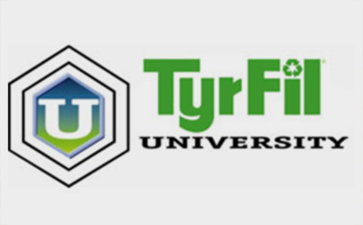Keeping Solutions Easier Amidst the COVID-19 Climate
The task of adjusting revenue forecasts, changing marketing strategies, and rewriting sales plans has become an everyday occurrence for millions of U.S. businesses. “Readapt and rethink” is now the mantra of American industry in the year 2020. As we endure the worst pandemic of the past century, organizations across the vertical spectrum have been heavily affected across nearly every facet of operations. Not only has the COVID-19 crisis taken each aspect of our economy by storm, its continued to wreck its toll on everything from manufacturing and distribution, to supply chain management and beyond.
The Off-the-Road (OTR) equipment market is no stranger to the coronavirus impact. Operators and technology developers alike are doing their best to keep factories humming, projects on target, and field production underway. While physical restrictions vary from state to state, we can all agree that today’s climate is anything but “business as usual.” Here at Carlisle TyrFil, we are committed to playing our part to support our end-to-end production cycle in an appropriate manner—caring for our valued employees and customers, while continuing to service our core industry segments to every degree possible, within the limitations of the pandemic situation.
However, our industry overall is without question evolving. ResearchandMarkets.com has recently updated their industry outlook. According to their findings, “amid the COVID-19 crisis, the global market for OTR Tires estimated at US$5.6 Billion in the year 2020, is projected to reach a revised size of US$7 Billion by 2027, growing at a CAGR of 3.2% over the analysis period 2020-2027.” According to recent reporting, “after an early analysis of the business implications of the pandemic and its induced economic crisis, growth in the Construction & Mining Equipment segment is readjusted to a revised 4% CAGR for the next 7-year period. This segment currently accounts for a 31.1% share of the global OTR Tires market.”
As OTR operators have their hands full trying to salvage their fiscal bottom line, and efficiently manage equipment fulfillment, productivity and maintenance needs, there is one productivity and safety solution that can offer both ROI value and peace of mind during these tenuous times. Having a trusted tire solution on-the-job enables operators to check at least one safety “box” off their already crowded list of operational hazards to consider.
Polyurethane tire fill has been an alternative go-to technology for nearly five decades. While it’s a tire format that OTR businesses have certainly needed and wanted—it’s also a technology that many within the industry have yet to discover. Tire or “foam” fill is both safe and eco-friendly, and can save businesses in the construction niche in particular the headaches of abruptly halted production due to unexpected tire flats. Tire fill makes OTR tires virtually flat free. Pioneered by the TyrFil™ brand for nearly 50 years, the technology enables heavy equipment such as bulldozers, skid-steer loaders, telehandlers and excavators to literally glide over typical work site debris that would quickly damage and puncture traditional pneumatic tires. Pieces of glass, rocks, nails, rebar and other sharp discarded items are no match for foam-filled OTR tires. They ensure that “big machines” can operate more efficiently and safely, in a variety of environmental settings—even offering a selection of durometer choices for varied jobsite applications.
Because tire fill offers a smoother, flatproofed ride, drivers (who often spend multiple hours behind the wheel riding over rugged, uneven surfaces) are sparred the brunt of the G-force vibrations that are typical when riding on solid aperture tires. Tire fill provides a cushion against the cross-axle jolting that can lead to a condition called Whole Body Vibration, or “WBV.” WBV is a real medical condition causing muscular/skeletal stress and serious potential worker injury.
Today’s OTR operators need less, not more, to worry about in the current business climate. The COVID-19 pandemic has already required many organizations to manage and comply with a host of new regulatory and safety considerations to ensure that employees remain protected on the job. While these efforts are necessary and essential to maintaining worker safety, many of the resulting requirements also add directly to operator expenses—and like any business adjusting to this new work environment, revenues have suffered as a result. Selecting a reliable tire technology in the form of puncture free, sustainable TyrFil can help fiscal and logistics managers working within the OTR equipment market to ease additional complications during an already complex time.
Find out how TyrFil™ can help your business by learning more about the many offerings available to support your OTR equipment needs this summer and beyond.
Carlisle TyrFil


